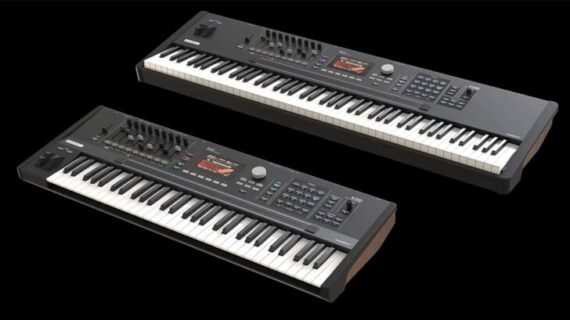Kurzweil K2061 & K2088 V.A.S.T. Synthesizers Now Available
After teasing both synthesizers at NAMM earlier this year, Kurzweil has finally announced that the K2061 and K2088 – a modern update to the classic K2000 – are available to order.
Released in 1991, the Kurzweil K2000 was a 24-voice synth and sampler that, at the time, boasted some pretty powerful features, thanks to its V.A.S.T (Variable Architecture Synthesis Technology) synth engine. The K2061 and K2088 take the spirit of that instrument but use the latest tech to make them suitable for a contemporary audience.
They say, “We asked ourselves, what if we could rebuild the legendary K2000 V.A.S.T. synthesizer, but using today’s technology?”
Kurzweil’s V.A.S.T. engine has evolved significantly since its launch 30 years ago, and the new K2061 and K2088 are both modern powerhouse synths, with up to 32 layers per program and a huge 256 voices of polyphony on tap, all running from FlashPlay memory for instant load times.
The 2GB library of factory sounds spans more than 2,000 programs and over 500 multis, including a curated selection of sounds from classic Kurzweil instruments, plus another 2GB of user space for your own sounds and samples. K2061 and K2088 are compatible with standard WAV/AIFF formats and legacy Kurzweil sounds going back to the K2000.
Alongside the V.A.S.T. core you’ll find a six-operator FM engine that can load vintage SysEx patches, VA1-style virtual analogue oscillators and a KB3 organ mode with realistic drawbar control. There’s a varied arsenal of effects onboard, with over 32 effects units and 1000 preset chains, alongside a master section with EQ and compression for extra polish.

Both synths are 16-part multitimbral with 16 programmable MIDI zones, each with its own arpeggiator, step sequencer, and RIFF generator, backed by up to 40 assignable physical controls per zone, including knobs, sliders, buttons, wheels, and pedal inputs, along with a three-section ribbon controller.
The K2061 is built around a 61-note semi-weighted synth-action keybed from Fatar (TP/9) with channel aftertouch, designed for expressive synth playing. The K2088 steps up to a full 88-note, hammer-action weighted keybed (Fatar TP/40L), also with aftertouch.
Kurzweil K2061/ K2088 – Song Demos:
Kurzweil K2061 is priced at $2199/£1899, and K2088 is priced at $2999/£2175.
Find out more on Kurzweil website.



